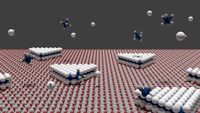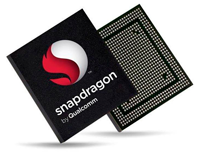Electronics News
Archive : 16 February 2018 год
 A 5G test platform to help support test development for devices such as baseband chips has been announced by Anritsu.
A 5G test platform to help support test development for devices such as baseband chips has been announced by Anritsu.
Working with Qualcomm Technologies, Anritsu says its platform, the next generation communication system beyond 4G LTE, is designed to support Qualcomm Technologies in an effort to commercialise next generation 5G NR technologies.
The test platform has been designed for technology required by ultrafast large-capacity 5G communications, such as wideband signal processing and beamforming architectures. Anritsu says that its platform supports millimeter-wave and sub-6 GHz RF tests as well as protocol tests.
Anritsu hopes that by offering measurement solution to support early deployment of 5G services, it will play a key role in the transition from 4G LTE to 5G systems to make these networks and mobile devices ‘a commercial reality in 2019’.
Author
Bethan Grylls
Source: www.newelectronics.co.uk
 The basis for growing wafer-scale two-dimensional crystals for future electronic devices has been published in two online nanotechnology journals.
The basis for growing wafer-scale two-dimensional crystals for future electronic devices has been published in two online nanotechnology journals.
Growing high-quality, crystalline 2D materials at scale has proven to be a challenge, but a team of researchers, led by Professor Joan Redwing of the National Science Foundation and Penn State, claim to have developed a multistep process to make single crystal, atomically thin films of tungsten diselenide across large-area sapphire substrates.
"Up until now, the majority of 2D devices have been fabricated using small flakes that are exfoliated off of bulk crystals," Prof Redwing said. "To develop a device-ready technology, you have to be able to make devices on large-area substrates and they have to have good crystal quality."
The process uses sapphire as the substrate because of its crystalline structure. This structure orients the film growth in a crystal pattern through epitaxy.
As small islands of the material form on the substrate and the substrate is heated, the islands spread out across the substrate in a uniform pattern. This is said to form a large-area film without gaps and with few defects.
According to the team, the key was the use of gas-source chemical vapor deposition, which they used to control the island density and the rate of spreading to achieve a single layer of the 2D material.
A team led by associate professor Joshua Robinson of Penn State is said to have now provided the foundational understanding to enable device-ready synthetic 2D semiconductors based on these epitaxial large-area films in future industrial-scale electronics.
"The primary significance of this work is we were able to achieve an understanding of the extrinsic factors that go into having a high-quality 2D material," Robinson explained. "What we found was that even when you grow oriented crystals on a surface, there are other factors that impact the ability to get high electron mobility or fast transistors."
The team said that they discovered a strong interaction between the sapphire substrate and the monolayer film, with the substrate dominating the properties. To overcome these challenges, they grew two or three layers which they said improved the performance by factors of up to 100 times.
"This is the first real evidence of the effect of the substrate on the transport properties of 2D layers," Robinson concluded.
Author
Bethan Grylls
Source: www.newelectronics.co.uk
 Qualcomm Technologies has begun sampling the Qualcomm Snapdragon X24 LTE modem, the first Category 20 LTE modem to be announced that supports download speeds of up to 2Gbit/s. It is also the first-announced chip to be built on a 7nm FinFET process.
Qualcomm Technologies has begun sampling the Qualcomm Snapdragon X24 LTE modem, the first Category 20 LTE modem to be announced that supports download speeds of up to 2Gbit/s. It is also the first-announced chip to be built on a 7nm FinFET process.
This latest addition to Qualcomm’s modem stable is being seen as a continuation of the company’s drive to take the industry closer to 5G, while also widening the technology gap with its competitors.
The X24 is Qualcomm’s eighth generation LTE multimode modem and third generation Gigabit LTE solution. It offers a number of advanced cellular features which are intended to strengthen the LTE foundation for future 5G NR multimode devices and networks.
“The Snapdragon X24 LTE modem has been designed to provide enhanced mobile broadband and deliver an extremely important gigabit coverage layer for commercial 5G networks and mobile devices that are expected to start launching in 2019,” said Serge Willenegger, general manager, 4G/5G and Industrial IOT, Qualcomm Wireless GmbH. “The X24 packs a powerful array of the most advanced 4G LTE technologies commercially available, helping mobile operators to fully mobilise their spectrum assets and maximise the capacity of their Gigabit LTE networks, and mobile device makers to offer consumers a tangible glimpse of our 5G future”.
The Snapdragon X24 supports up to 7x carrier aggregation in the downlink, as well as 4x4 MIMO on up to five aggregated LTE carriers – both mobile industry firsts – for a total of up to 20 concurrent spatial LTE streams which will allow devices that feature the Snapdragon X24 LTE modem to use all spectrum assets available from a mobile operator.
Additional system capacity improvements have also been made possible through the support of Full Dimension Multi-Input Multi-Output (FD-MIMO). In the uplink, Snapdragon X24 supports Category 20 upload speeds, 3x20MHz CA and up to 256-QAM.
The Snapdragon X24 LTE modem pairs with an advanced RF transceiver built in 14nm FinFET process technology, and Qualcomm’s QET5100 Envelope Tracker, making it the first modem to support 60 MHz envelope tracking for up to 3x uplink carrier aggregation channels with simultaneous High Power User Equipment (HPUE) support in Band 41.
The Snapdragon X24 modem supports concurrent multi-constellation multi-frequency global navigation satellite systems (GNSS), which provides highly accurate location positioning required in different applications and services.
The much faster speeds provided by the Snapdragon X24 LTE modem means that OEMs will be able to offer users immersive 360-degree video, connected cloud computing, richer entertainment and instant apps, but it will be challenging for smartphone OEMs to design handsets that can support so many bands and antennas and, as yet, no X24 deals have been announced.
Qualcomm will be demonstrating its new modem at Mobile World Congress at the end of the month.
Sampling to customers has already begun with the first commercial devices expected by the end of 2018.
Author
Neil Tyler
Source: www.newelectronics.co.uk
 A partnership between Panasonic and Trend Micro has formed with a view to develop a cyber security solution to detect and prevent cyber-attacks against autonomous and connected cars.
A partnership between Panasonic and Trend Micro has formed with a view to develop a cyber security solution to detect and prevent cyber-attacks against autonomous and connected cars.
The duo aim to create a solution that will prevent intrusions into Electronic Control Units (ECUs) and in-vehicle infotainment devices (IVI).
This partnership will leverage Panasonic's Control Area Network intrusion detection prevention technology, which will aim to detect unauthorised commands sent to ECUs. It will also utilise Trend Micro’s IoT security, which will be implemented on IVI devices to detect attacks that seek to exploit vulnerabilities through the Internet. The idea is that events will be identified by both technologies and then collected and sent to an analysis platform in the Cloud to detect and block suspicious traffic.
The duo aims to launch commercially after 2020.
Author
Bethan Grylls
Source: www.newelectronics.co.uk

